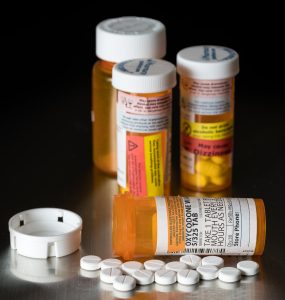
Suboxone, dubbed the “anti-addiction medication,” is failing to do its job. A new study published by John Hopkins Bloomberg School of Health in February, reveals a large number of buprenorphine patients are still being prescribed opioid medications during and after “treatment.” For some this may come as no surprise, but to those who have strongly supported the use of medications in addiction treatment may want to reconsider their stance on the issue.
John Hopkins’ findings, which were published in the Journal Addiction on February 23rd, illustrate the demand for more than just the simple reliance on medication to address our addiction problem. The use of Suboxone for opioid addiction has been used since 2002, but it is only now that evidence shows, much like Methadone, this drug fails to “cure” us of substance abuse.
What Did The Study Find
In 2013, approximately 250 million opioid prescriptions were written, that is, enough for every adult in America to have a bottle of pills. We realize that it is sometimes necessary for patients to have opioid medications, due to chronic pain or after a surgery, but this number indicates a terrible habit in which our physicians have fallen into. Medicate the problem and hope for the best. Sounds a lot like what our policymakers have made addiction treatment out to be.
The findings from John Hopkins show unsettling, yet not surprising, results. The study was measured over the course of two and a half years, from January 2010 to July of 2012. They measured the records of 38,096 buprenorphine users in 11 states. Because buprenorphine is sometimes prescribed for pain, the study narrowed the analysis down to Suboxone patients, totaling out to 20,124 individuals.
Of those, 27% were also prescribed another opioid medication, which they either abused or diverted. The study also revealed that 54% of the Suboxone patients returned back to prescription opioids after their “treatment” was complete. Furthermore, these numbers do not reflect the individuals who purchased prescription pills illegally or those who used heroin or other drugs during or after treatment. Thus, the true numbers are likely to be greater than the findings in this research.
What Is The Solution
Many will argue these findings only further indicate a need for more resources dedicated to medication-assisted treatment, a clinical tool many in the field of Drug and Alcohol have come to rely on. This model of treatment has become so widely accepted, even former President Obama gave it his stamp of approval.
The idea behind medication-assisted treatment is for the patient to receive a low-dose of a medication, such as Suboxone, while participating in treatment and therapeutic groups. In theory, the model has its benefits for a particular kind of patient or in certain circumstances, but this is rarely the exception. What one must remember is that addiction is a progressive disease. Each patient is unique in their circumstances and levels in which they suffer. Although medication-assisted treatment may be a valuable tool for opioid addicts who have struggled in the past with chronic relapse, this is not the case for the individual who is attempting to get clean and sober for the first time. Nonetheless, physicians still tend to prescribe said medications to patients who have never attended support groups or treatment. It has become the “first-line” of treatment, lacking qualification standards, and clearly lacking proper regulation.
So, would more devoted resources to medication-assisted treatment really be the answer to our addiction problem? It is questionable, to say the least. Nevertheless, we do need a more cohesive and collaborative health care system, in which our providers, counselors, emergency personnel, and insurance companies work together to better treat and serve patients. Although many states have begun to create prescription monitoring databases, many providers fail to utilize them to their fullest potential, continuing to contribute to the abuse and diversion of medication. In regards to the prescription monitoring programs, Caleb Alexander, co-director of the Center for Drug Safety and Effectiveness at the John Hopkins Bloomberg School of Public Health said, “The big concern is fragmentation of care. The databases are not panacea. Many doctors don’t use them. Many doctors aren’t even registered. Many who are registered don’t use them regularly.”
Alexander went on to mention that the study conducted by him and his team “raises important questions about the real-world quality of medication-assisted treatment.”
Contact Clearbrook For Opioid Addiction Help
It is clear that the system in which many have come to rely on is broken and inconsistent. Although valuable in theory, there are many variables which need to be adjusted, modified, corrected, or done away with completely. Addiction is not a black and white issue. It needs to be addressed and treated in a variety of ways. Assuming medication-assisted treatment or the use of Suboxone is the best and only form of treatment, is dangerous and irresponsible.
If you or a loved one is struggling with addiction or finds themselves addicted to Suboxone, we can help. For more than 40 years, Clearbrook Treatment Centers has been a leader in the treatment of alcoholism and chemical dependency. If you are ready to take the first step in changing your life, contact our Admissions Specialists today.








